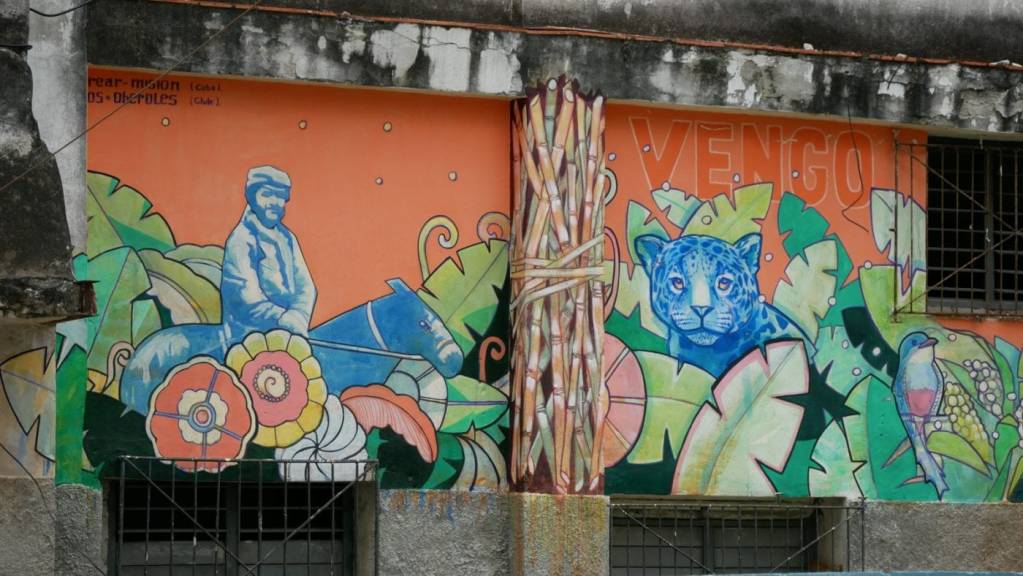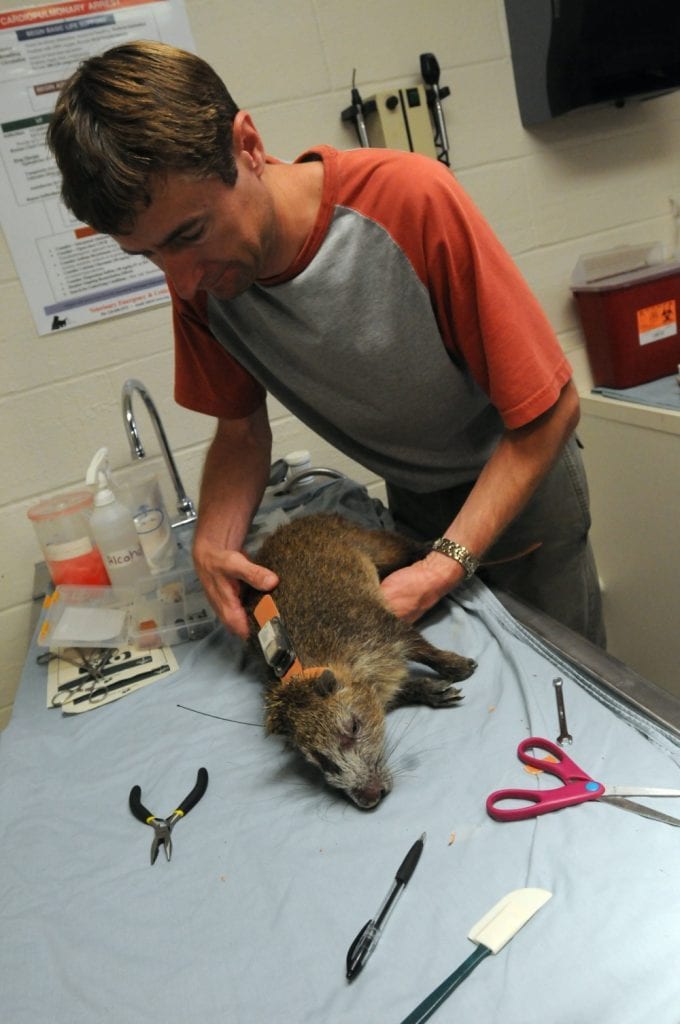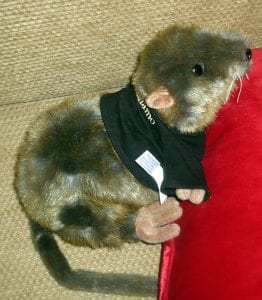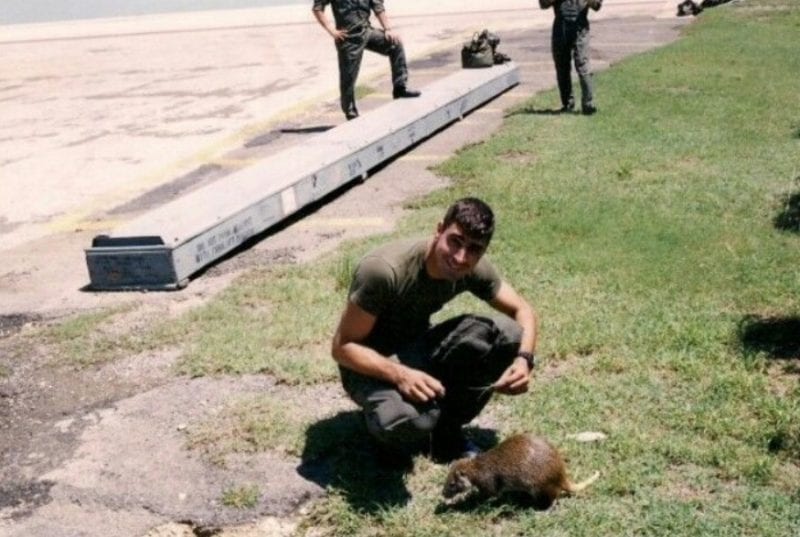US Studies Invasion of Banana Rats at its Guantanamo, Cuba Base
By Tracey Eaton (Cuba Money Project)
 HAVANA TIMES – The US Department of Defense has given US $97,102 to Texas A&M AgriLife Research to study the Cuban hutia at the U.S. Naval Base at Guantanamo, Cuba.
HAVANA TIMES – The US Department of Defense has given US $97,102 to Texas A&M AgriLife Research to study the Cuban hutia at the U.S. Naval Base at Guantanamo, Cuba.
Hutias are called banana rats because their bodily waste resembles little bananas. And the creatures are big – the size of small dogs. They can grow nearly two feet long and weigh up to 19 pounds.
Some Cubans eat them. They are “often cooked in a large pot with wild nuts and honey,” according to Wikipedia.
Cubans overhunted hutias during the economic crisis of the 1990s, according to a 2017 paper called “The Last Survivors: current status and conservation of the non-volant land mammals of the insular Caribbean.”
The study said:

Indiscriminate hunting in this period led to extirpation of some formerly abundant subpopulations such as the Najasa sub-population (Sierra de Chorillo, Camaguey Province). This was considered to be the densest hutia subpopulation in Cuba with an estimated 100,000 individuals in 1989–1990 but was rapidly eliminated… No animals were detected during a survey in 2002, and locals reported that hutias disappeared several years earlier.
The species is partly terrestrial, so may be vulnerable to predation by feral dogs. Subpopulations on Cayo Blanco, Cayo Mono, and neighboring islets in Matanzas Province have been extirpated by dogs brought by fishermen to hunt hutias and then abandoned on the islands.
Hutias found a refuge at Gitmo, according to a 2002 paper called “Assessment of Potential Cuban Hutia Management at U.S. Naval Base, Guantanamo Bay, Cuba.”
 Most kinds of hutias in the Caribbean were “rare or extinct,” but banana rats were “very common” at Gitmo, the paper said, and that was a problem.
Most kinds of hutias in the Caribbean were “rare or extinct,” but banana rats were “very common” at Gitmo, the paper said, and that was a problem.
Conflicts with humans include damage to landscaping, gnawing through cables, damage to vehicles, and the accumulation of large amounts of feces in residential areas.
The Defense Department wants Texas A&M to carry out “a population estimation methodology and spatial ecology assessment for the Cuban hutia” at the Naval Base.
The DOD awarded the grant in September.
Other non-native species at the base include “feral cats and dogs, chickens, goats, white-tailed deer, guinea fowl, and pigeons.”
The study said:
The Cuban hutia is primarily nocturnal, spending the days in trees, inside hollowed-out tree trunks, in dense grass, in rocky areas, or underground in natural openings. They forage on a variety of plant parts (bark, stems, leaves, flowers, fruit) of many species and may consume lizards. Presumably, they do not require free water. The chief predators of hutia are humans, large birds of prey, boas, and introduced dogs and cats. The Cuban crocodile may have been a significant predator of hutia, but that species is now very rare in Cuba. Hutia may feed on the bark that they strip from trees and may feed in gardens, but are not considered an agricultural pest, perhaps because of their rareness throughout most of Cuba.
Some people report they’ve purchased banana rat plush toys at the Naval Base. Here’s one on eBay that had a starting bid of $12.50.
When authors of the study went to the Naval Base they found hutia everywhere – “ocean cliffs, mud flats, grasslands, forest, and residential areas” on both sides of Gitmo.

The study said:
The animals were observed ‘resting’ in trees during the day and foraging on the ground at night. Their signs (tracks, droppings, and incisor marks on trees) were visible just about everywhere. They appear to live in extended family groups of 10 or more individuals (adults and young of both sexes).
Culling operations (conducted from a pick-up truck mostly at night with .22-caliber rifles and spotlights) were used to collect specimens for necropsy. Necropsies were performed on 57 hutia.
All animals appeared healthy and no external or internal parasites were noted. A few animals were missing a portion of their tails.
Twenty-two of 26 adult females (84.6%) were pregnant, averaging 1.7 embryos per pregnant female.
Getting rid of the animals isn’t easy, the study said.
Kill traps probably could not be used on the ground without significant hazard to non-target species such as land crabs, boas, birds, and lizards, including the Cuban ground iguana.
Physical barriers are being used to a limited extent to reduce hutia problems. Hutia are capable climbers, which makes effective barriers more difficult to devise. On the other hand, we do not know how well hutia can dig; a few simple trials with captive hutia could provide that information.
… Current policy calls for all live-trapped hutia to be euthanized to avoid “moving the problem elsewhere” – a common problem with relocation.
There has been discussion about donating captured hutia to the Cuban people to restore populations of this mammal, which is rare in other parts of its range.
Studies should be conducted to determine how to make this efficient and humane…
Banana rat diplomacy. That would be a first.

Ernie Rossi and Tom Siegfried hunted and named the Banana rats with bow and arrow from 1964 til 1965.
We rented a boat from the base rec center, went across the bay and looked for the rats in the tops of the Mango trees near the Gitmo river .
We would site one, turn the boat around and opened it up and crashed into the mangroves, climbed to the tops of the trees and shot them, many times it took 5-6 arrows to kill them and sometimes they attacked.
One rainy day by the small pier near the air base I saw one on the ground taking a dump so I shot him, when I picked him up, I looked at his turds and they looked like miniature bananas. We never knew their genetic names so from that day forward, we called them banana rats!
In those days, everyone knew us because we hunted, fished, spear fished and scuba dived every inch of Gitmo waters!
That’s why even after all these years, they are still called banana rats!
If you want to get rid of them, just give Tom and Ernie a call, will kill every rat on the frickin base!
BTW we sold them to the Cubans and Jamaican civilian’s working on the base for .25 cents.
Banana rats were command on the base in the early ’70’s They were there in 72 when I was stationed at the Barracks, which no longer exists. They were still there when I left in 73. They sat at about 3 foot high.
Cubans resorted to eating these rodents during the Special Period? Ugh! I did not know that. Good to know the next time one of my Cuban buddies complains to me about “keeping track of his macros”.